Since the announcement of the CAP 2023-2027 draft strategic plan, there has been a huge focus on eco schemes.
This is unsurprising, as they account for 25% of the direct payment (Pillar I) budget, with €292m a year up for grabs for farmers who qualify. That is almost €1.5bn over the five years the new rules will apply for.
Almost immediately, there were criticisms of the five qualifying measures announced as being too limited and too restrictive.
It was said that dairy farmers, in particular, and more intensive farmers in general, would be locked out.
Indeed, the Department of Agriculture’s own modelling indicated that 15% of farmers would miss out, resulting in a per-hectare payment of €74 for those who did qualify.
That’s 18,000 farmers, a close correlation to the number of dairy and large tillage farmers in the country.
Changes
The Minister for Agriculture and the Department have now responded, significantly extending the five criteria previously announced, and adding three entirely new ones.
In addition, two of the criteria, the tree/hedgerow planting and the Space for Nature options, can be doubled up on by farmers to count as two qualifying measures in a single year at a higher level of achievement.
From being accused by farmers of being walled out, it’s more likely now that the amended proposals will be questioned by environmental activists, who are already saying that the bar has been lowered too much.
Like every other aspect of the CAP strategic plan, the eco-scheme measures must be forwarded to Brussels for approval by the Commission before we can know this will be the final outcome.
Here are the eight qualifying criteria now proposed.
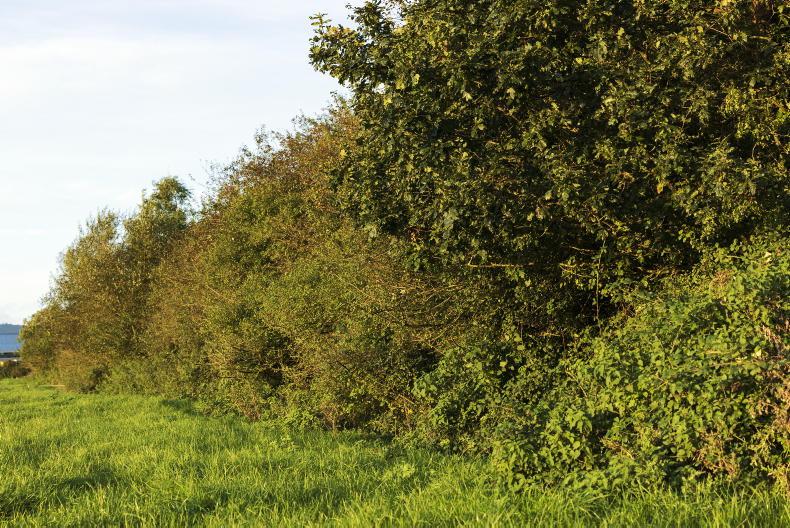
Farmers to meet the 7% "Space for Nature" requirement. \ Donal O'Leary
At least 7% of a farmer’s holding must be devoted to biodiversity, habitats or landscape features, building on the 4% requirement for all farmers already set under GAEC 8 as part of conditionality – known previously as ecological focus areas (EFAs).
Space for Nature (enhanced)
Where a farmer commits 10% or more of his/her holding to “Space for Nature”, that will be considered as two actions, and qualify a farmer for a full eco-scheme payment.
Comment
This action is pretty straightforward. Tillage farmers will be aware of the GAEC 8 mentioned above. In the current CAP, there was/is a requirement for 4% of farms to comprise EFAs to qualify for the greening payment.
Grassland farms in Ireland were deemed to automatically qualify, but tillage farmers had to prove their eligibility.
Back in 2016, large maps of every field in a tillage farmer’s holding were sent by the Department, and farmers had to show the hedges, copses and other areas of non-farming use. Man-made features such as laneways, roadways, yards and sheds were excluded.
The good news is that we know almost all farms satisfied that 4% EFA criteria. Only a handful of farms failed to receive the greening payment in any given year.
While the 7% bar is higher (and the 10% bar higher still) early modelling across a range of farms has suggested that this measure will be within reach of all but a handful of farmers.
Extensive livestock production
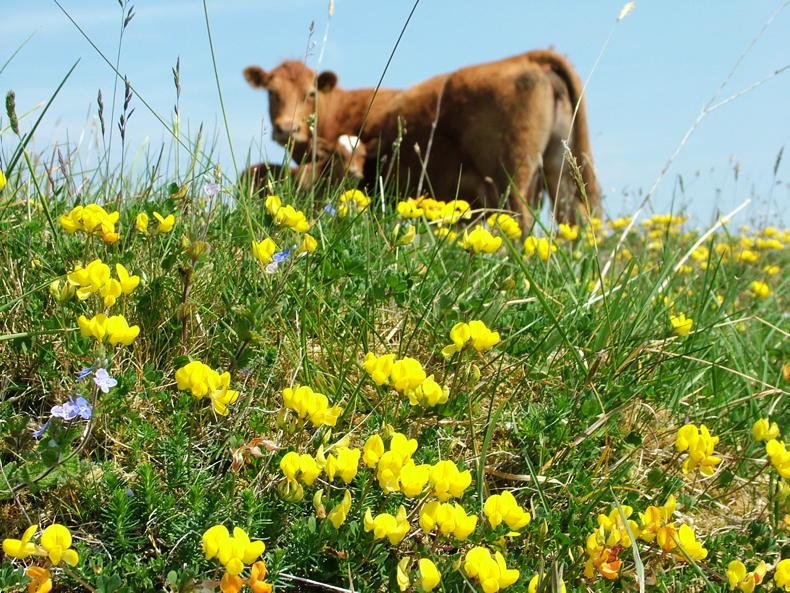
Cattle grazing like this should qualify for the extensive livestock production measure, but what will happen if TB strikes?
This measure promotes traditional grassland farming practices at extensive animal stocking rates. To qualify, the stocking rate over the previous year must be between a minimum 0.15LU/ha and a maximum proposed as 1.5LU/ha.
Comment
This measure will appeal to extensively stocked farmers. While the 0.15LU/ha minimum will not be a challenge to most except perhaps hill sheep farmers, as many as half of Ireland’s farmers would be stocked below the 1.5LU/ha upper limit.
Any farmer utilising this measure would need to keep a close eye on their stocking limit as the year comes to a close. One early question being asked is whether a force majeure dispensation will apply if a farmer is placed under restriction due to a disease outbreak, causing their stocking rate to exceed the 1.5LU/ha limit.
Limiting chemical nitrogen use
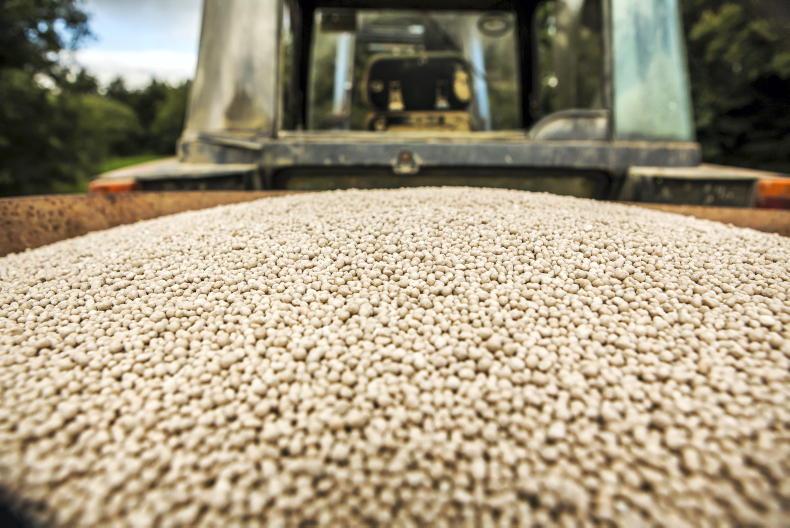
Limits for maximum chemical nitrogen allowed under this measure have been revamped to take account of different stocking intensities.
This measure has been expanded to also reward more moderate to intensive farmers who limit their chemical nitrogen use to a lower level, based on their stocking rate in the previous calendar year. The details are outlined in Table 1. These figures are indicative only and are not yet finalised.
Each farmer will be presented with their chemical nitrogen limit in the year of the eco-scheme application based on their stocking rate in the previous year.
Where a farmer was stocked at 100kg of organic nitrogen per hectare in 2022, they must ensure they do not apply more than 89kg of chemical nitrogen per hectare in 2023 to qualify under this measure.
Compliance levels for 2023 will be checked using the Department’s fertiliser register in the last three months of 2023.
Comment
This measure has been completely revamped. Originally, it was effectively a companion measure to the extensive grazing measure, with a maximum chemical nitrogen of 89kg/ha over the entire year, which is about 2.5 bags CAN per acre.
Now, there are bands for various stocking intensities.
What immediately jumps out is the massive difference between farms stocked between 131kg and 170kg of organic nitrogen per hectare (Norg/ha) and those between 171kg and 210kg Norg/ha.
Farmers under the derogation stocking rate are limited to 165kg chemical N/ha.
Those in the lower half of derogation stocking intensity are allowed 240kg/ha, almost half as much again. The 240kg/ha limit equates to about seven bags of CAN per acre. Will this encourage farmers close to the derogation limit into derogation, to avail of the much higher fertiliser levels allowed as an eco-scheme measure?
It is also clear that the allowable limit of combined organic and chemical nitrogen makes its presence felt above 210kg Norg/ha, as the extra organic nitrogen at very high stocking rates inhibits the amount of chemical fertiliser permitted.
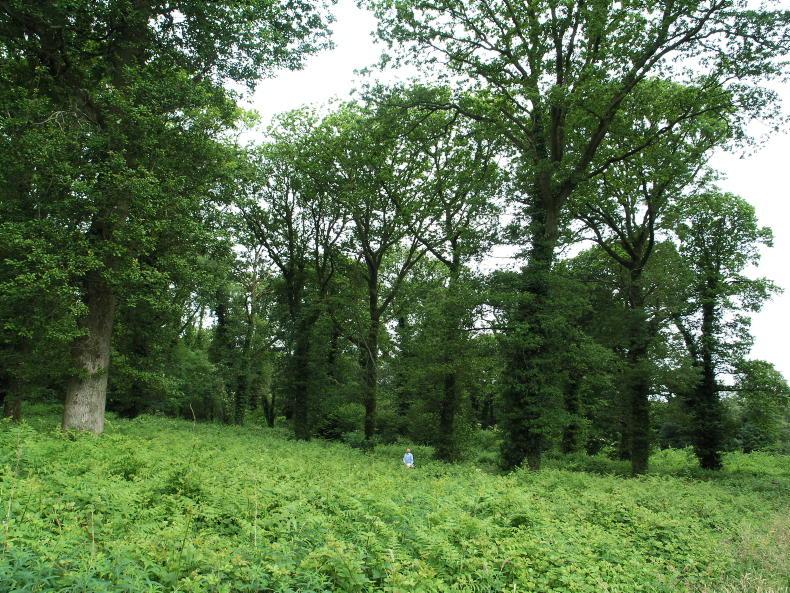
Planting of native trees under this measure will in time result in oak trees like this being a more common sight on Irish farmland.
This will promote the planting of native trees. To qualify, the farmer must plant at least three trees per eligible hectare for every year this measure is used as a qualifying measure in their eco-scheme participation.
4a Planting of native trees
This is the second double-up option. Where a farmer elects to plant twice the commitment, ie six trees per eligible hectare or two metres of hedgerow per eligible hectare, this will count as two measures and qualify a farmer for the full eco-scheme payment.
Comment
This is another measure that has been significantly extended. Firstly, farmers have the option of planting hedge rather than trees. Secondly, for farmers who like this option, there is the opportunity to use it on the double, and gain the eco scheme payment from this measure alone.
The effectiveness of this measure in providing environmental good is easy to quantify. Two metres of hedge or two trees planted will earn €70.
The debate as to whether this is ‘high-ambition’ or not will rage. Farmers who are leasing or renting most or all of their land won’t be able to easily access this option.
GPS-controlled fertiliser spreader

GPS-controlled fertiliser spreaders and sprayers are required to qualify under this measure - but only a minority of farmers own such equipment.
This will promote the use of precision machinery for application of chemical fertiliser, thereby reducing inputs while also reducing environmental and climate impact. This measure has been expanded to now include GPS-controlled sprayers where they are used to apply liquid fertiliser and/or plant protection products.
Comment
This measure, originally only for GPS-controlled fertiliser spreaders, was heavily criticised by farmers at the minister’s round of mart meetings. Stephen Arthur, the IFA’s dairy chair, memorably suggested that farmers “would be spreading fertiliser with a spoon” at current prices.
The inclusion of GPS-controlled sprayers is logical, as the efficiency, accuracy and verification provided by such equipment is equally advantageous for spray as for chemical fertilisers.
There has been calls for GPS guidance, which is far more widely used, to be allowed under this measure.
Guidance can be purchased for as little as €1,000 nowadays, whereas GPS-controlled equipment will set you back a minimum of €25,000, although it is TAMS-approved. Some merchants offer contract spreading of fertiliser using GPS-controlled equipment, and it seems as if this practice may well be eligible for this measure. Agri-contractors may offer the same facility for spraying and/or fertiliser spreading.
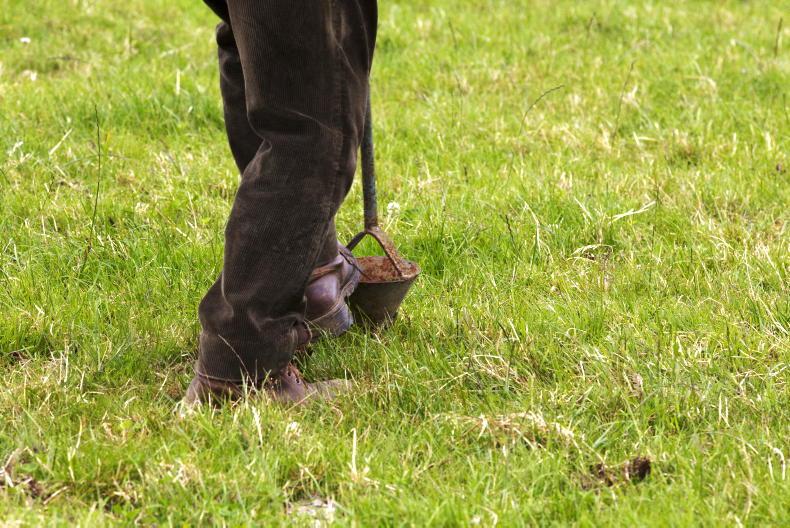
Soil sampling - this measure can only be used one year in three.
Soil sampling and, where appropriate, liming on all eligible hectares is aimed at improving soil fertility. This action can be chosen once every three years, in line with Teagasc guidance regarding the appropriate intervals between soil samples being taken.
Comment
This measure is pretty straightforward, although derogation farmers are likely to grumble at their exclusion. The Department will say that as soil sampling is required under the derogation, it cannot qualify.
Farmers need to note that this can only be used a maximum of two years of the five that this scheme will operate, so to get the payment every year, at least two other qualifying criteria must be used in other years.
Enhanced crop diversification
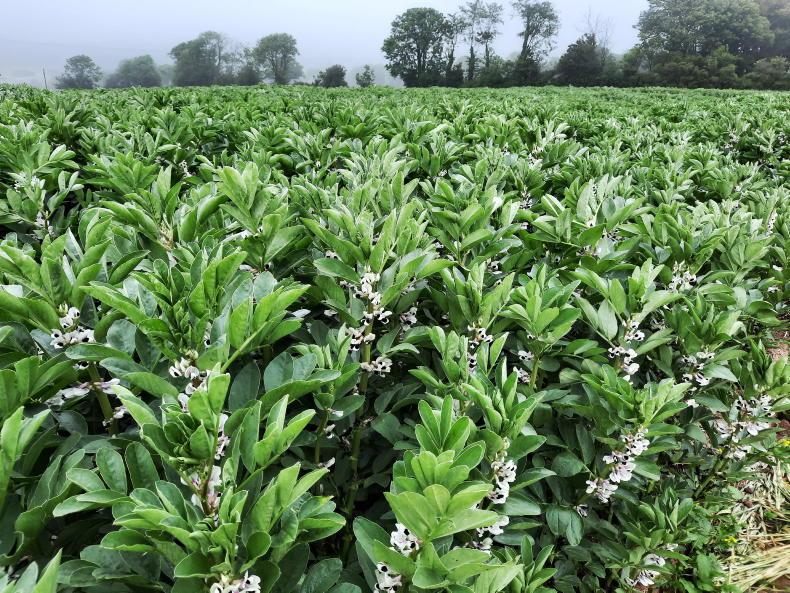
Beans are one of the break crops allowed to establish enhanced crop diversification.
Where a farmer has a crop diversification requirement, they must plant a break crop (beans, peas, oilseed rape or oats) as their second or third crop.
Where a farmer has a two-crop requirement, the break crop must account for at least 25% of the arable area. Where a farmer has a three-crop requirement, the break crop must also account for at least 25% of the arable area.
Comment
This measure is specifically for the tillage sector. It builds on the three-crop rule, which has been a requirement for the greening payment for tillage farmers since 2016.
Whereas that rule allowed any crop or crops to comprise the 25% not under the main crop, to use this measure as an eco-scheme criterion means devoting 25% to the crops specified above.
It should be noted that it can be a combination of two or more of these crops, for instance 15% of the land in beans and 10% planted with oats. This will mean farmers don’t have to run close to the wire with rotations.
There are some calls to allow crops like potatoes and beet to be used as eligible break crops.
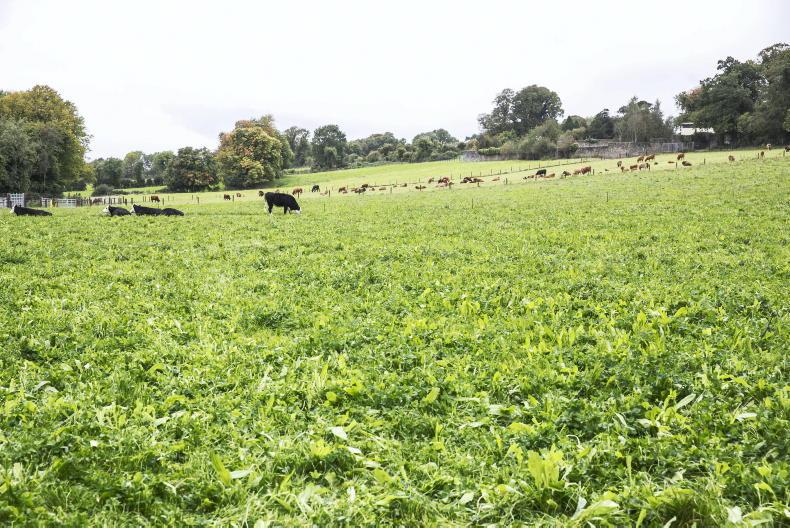
A multispecies sward must be planted on at least 6% of eligible acres.
This requires that a farmer would plant a recognised multispecies sward (MSS) on at least 6% of eligible hectares in the year this is selected as one of the two required eco-scheme actions.
Comment
This may prove a very popular measure. There was a notable growth in use of multispecies swards among dairy farmers in particular across 2021.
With fertiliser prices off the charts, and unlikely to return to what farmers might regard as normal in the first months of 2022, it is expected that this trend will accelerate. To qualify, a farmer with 30ha would only have to plant 2ha with an MSS in a given year. There may be consideration given to the method of establishment of the MSS, as ploughing pasture could release carbon, undermining any gains from the lower nutrient requirement of the MSS.
Since the announcement of the CAP 2023-2027 draft strategic plan, there has been a huge focus on eco schemes.
This is unsurprising, as they account for 25% of the direct payment (Pillar I) budget, with €292m a year up for grabs for farmers who qualify. That is almost €1.5bn over the five years the new rules will apply for.
Almost immediately, there were criticisms of the five qualifying measures announced as being too limited and too restrictive.
It was said that dairy farmers, in particular, and more intensive farmers in general, would be locked out.
Indeed, the Department of Agriculture’s own modelling indicated that 15% of farmers would miss out, resulting in a per-hectare payment of €74 for those who did qualify.
That’s 18,000 farmers, a close correlation to the number of dairy and large tillage farmers in the country.
Changes
The Minister for Agriculture and the Department have now responded, significantly extending the five criteria previously announced, and adding three entirely new ones.
In addition, two of the criteria, the tree/hedgerow planting and the Space for Nature options, can be doubled up on by farmers to count as two qualifying measures in a single year at a higher level of achievement.
From being accused by farmers of being walled out, it’s more likely now that the amended proposals will be questioned by environmental activists, who are already saying that the bar has been lowered too much.
Like every other aspect of the CAP strategic plan, the eco-scheme measures must be forwarded to Brussels for approval by the Commission before we can know this will be the final outcome.
Here are the eight qualifying criteria now proposed.

Farmers to meet the 7% "Space for Nature" requirement. \ Donal O'Leary
At least 7% of a farmer’s holding must be devoted to biodiversity, habitats or landscape features, building on the 4% requirement for all farmers already set under GAEC 8 as part of conditionality – known previously as ecological focus areas (EFAs).
Space for Nature (enhanced)
Where a farmer commits 10% or more of his/her holding to “Space for Nature”, that will be considered as two actions, and qualify a farmer for a full eco-scheme payment.
Comment
This action is pretty straightforward. Tillage farmers will be aware of the GAEC 8 mentioned above. In the current CAP, there was/is a requirement for 4% of farms to comprise EFAs to qualify for the greening payment.
Grassland farms in Ireland were deemed to automatically qualify, but tillage farmers had to prove their eligibility.
Back in 2016, large maps of every field in a tillage farmer’s holding were sent by the Department, and farmers had to show the hedges, copses and other areas of non-farming use. Man-made features such as laneways, roadways, yards and sheds were excluded.
The good news is that we know almost all farms satisfied that 4% EFA criteria. Only a handful of farms failed to receive the greening payment in any given year.
While the 7% bar is higher (and the 10% bar higher still) early modelling across a range of farms has suggested that this measure will be within reach of all but a handful of farmers.
Extensive livestock production

Cattle grazing like this should qualify for the extensive livestock production measure, but what will happen if TB strikes?
This measure promotes traditional grassland farming practices at extensive animal stocking rates. To qualify, the stocking rate over the previous year must be between a minimum 0.15LU/ha and a maximum proposed as 1.5LU/ha.
Comment
This measure will appeal to extensively stocked farmers. While the 0.15LU/ha minimum will not be a challenge to most except perhaps hill sheep farmers, as many as half of Ireland’s farmers would be stocked below the 1.5LU/ha upper limit.
Any farmer utilising this measure would need to keep a close eye on their stocking limit as the year comes to a close. One early question being asked is whether a force majeure dispensation will apply if a farmer is placed under restriction due to a disease outbreak, causing their stocking rate to exceed the 1.5LU/ha limit.
Limiting chemical nitrogen use

Limits for maximum chemical nitrogen allowed under this measure have been revamped to take account of different stocking intensities.
This measure has been expanded to also reward more moderate to intensive farmers who limit their chemical nitrogen use to a lower level, based on their stocking rate in the previous calendar year. The details are outlined in Table 1. These figures are indicative only and are not yet finalised.
Each farmer will be presented with their chemical nitrogen limit in the year of the eco-scheme application based on their stocking rate in the previous year.
Where a farmer was stocked at 100kg of organic nitrogen per hectare in 2022, they must ensure they do not apply more than 89kg of chemical nitrogen per hectare in 2023 to qualify under this measure.
Compliance levels for 2023 will be checked using the Department’s fertiliser register in the last three months of 2023.
Comment
This measure has been completely revamped. Originally, it was effectively a companion measure to the extensive grazing measure, with a maximum chemical nitrogen of 89kg/ha over the entire year, which is about 2.5 bags CAN per acre.
Now, there are bands for various stocking intensities.
What immediately jumps out is the massive difference between farms stocked between 131kg and 170kg of organic nitrogen per hectare (Norg/ha) and those between 171kg and 210kg Norg/ha.
Farmers under the derogation stocking rate are limited to 165kg chemical N/ha.
Those in the lower half of derogation stocking intensity are allowed 240kg/ha, almost half as much again. The 240kg/ha limit equates to about seven bags of CAN per acre. Will this encourage farmers close to the derogation limit into derogation, to avail of the much higher fertiliser levels allowed as an eco-scheme measure?
It is also clear that the allowable limit of combined organic and chemical nitrogen makes its presence felt above 210kg Norg/ha, as the extra organic nitrogen at very high stocking rates inhibits the amount of chemical fertiliser permitted.

Planting of native trees under this measure will in time result in oak trees like this being a more common sight on Irish farmland.
This will promote the planting of native trees. To qualify, the farmer must plant at least three trees per eligible hectare for every year this measure is used as a qualifying measure in their eco-scheme participation.
4a Planting of native trees
This is the second double-up option. Where a farmer elects to plant twice the commitment, ie six trees per eligible hectare or two metres of hedgerow per eligible hectare, this will count as two measures and qualify a farmer for the full eco-scheme payment.
Comment
This is another measure that has been significantly extended. Firstly, farmers have the option of planting hedge rather than trees. Secondly, for farmers who like this option, there is the opportunity to use it on the double, and gain the eco scheme payment from this measure alone.
The effectiveness of this measure in providing environmental good is easy to quantify. Two metres of hedge or two trees planted will earn €70.
The debate as to whether this is ‘high-ambition’ or not will rage. Farmers who are leasing or renting most or all of their land won’t be able to easily access this option.
GPS-controlled fertiliser spreader

GPS-controlled fertiliser spreaders and sprayers are required to qualify under this measure - but only a minority of farmers own such equipment.
This will promote the use of precision machinery for application of chemical fertiliser, thereby reducing inputs while also reducing environmental and climate impact. This measure has been expanded to now include GPS-controlled sprayers where they are used to apply liquid fertiliser and/or plant protection products.
Comment
This measure, originally only for GPS-controlled fertiliser spreaders, was heavily criticised by farmers at the minister’s round of mart meetings. Stephen Arthur, the IFA’s dairy chair, memorably suggested that farmers “would be spreading fertiliser with a spoon” at current prices.
The inclusion of GPS-controlled sprayers is logical, as the efficiency, accuracy and verification provided by such equipment is equally advantageous for spray as for chemical fertilisers.
There has been calls for GPS guidance, which is far more widely used, to be allowed under this measure.
Guidance can be purchased for as little as €1,000 nowadays, whereas GPS-controlled equipment will set you back a minimum of €25,000, although it is TAMS-approved. Some merchants offer contract spreading of fertiliser using GPS-controlled equipment, and it seems as if this practice may well be eligible for this measure. Agri-contractors may offer the same facility for spraying and/or fertiliser spreading.

Soil sampling - this measure can only be used one year in three.
Soil sampling and, where appropriate, liming on all eligible hectares is aimed at improving soil fertility. This action can be chosen once every three years, in line with Teagasc guidance regarding the appropriate intervals between soil samples being taken.
Comment
This measure is pretty straightforward, although derogation farmers are likely to grumble at their exclusion. The Department will say that as soil sampling is required under the derogation, it cannot qualify.
Farmers need to note that this can only be used a maximum of two years of the five that this scheme will operate, so to get the payment every year, at least two other qualifying criteria must be used in other years.
Enhanced crop diversification

Beans are one of the break crops allowed to establish enhanced crop diversification.
Where a farmer has a crop diversification requirement, they must plant a break crop (beans, peas, oilseed rape or oats) as their second or third crop.
Where a farmer has a two-crop requirement, the break crop must account for at least 25% of the arable area. Where a farmer has a three-crop requirement, the break crop must also account for at least 25% of the arable area.
Comment
This measure is specifically for the tillage sector. It builds on the three-crop rule, which has been a requirement for the greening payment for tillage farmers since 2016.
Whereas that rule allowed any crop or crops to comprise the 25% not under the main crop, to use this measure as an eco-scheme criterion means devoting 25% to the crops specified above.
It should be noted that it can be a combination of two or more of these crops, for instance 15% of the land in beans and 10% planted with oats. This will mean farmers don’t have to run close to the wire with rotations.
There are some calls to allow crops like potatoes and beet to be used as eligible break crops.

A multispecies sward must be planted on at least 6% of eligible acres.
This requires that a farmer would plant a recognised multispecies sward (MSS) on at least 6% of eligible hectares in the year this is selected as one of the two required eco-scheme actions.
Comment
This may prove a very popular measure. There was a notable growth in use of multispecies swards among dairy farmers in particular across 2021.
With fertiliser prices off the charts, and unlikely to return to what farmers might regard as normal in the first months of 2022, it is expected that this trend will accelerate. To qualify, a farmer with 30ha would only have to plant 2ha with an MSS in a given year. There may be consideration given to the method of establishment of the MSS, as ploughing pasture could release carbon, undermining any gains from the lower nutrient requirement of the MSS.














 This is a subscriber-only article
This is a subscriber-only article










SHARING OPTIONS: